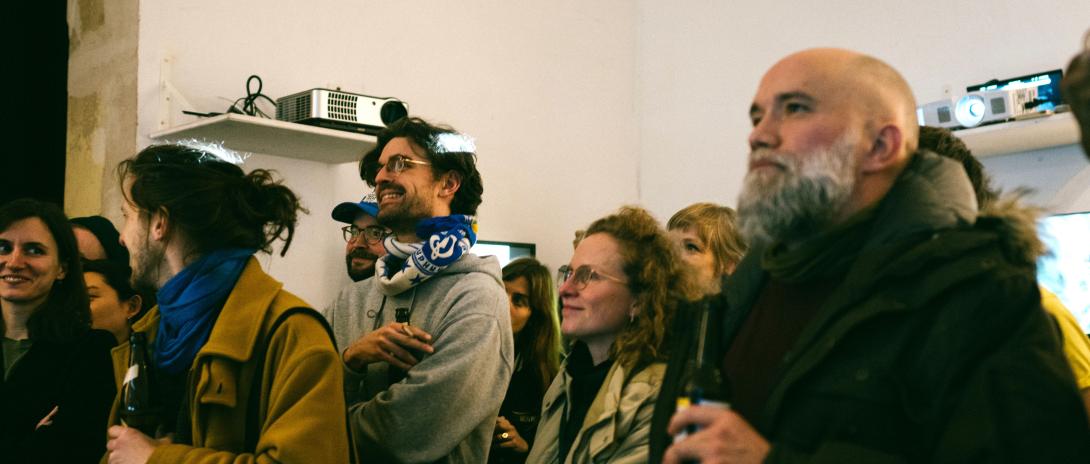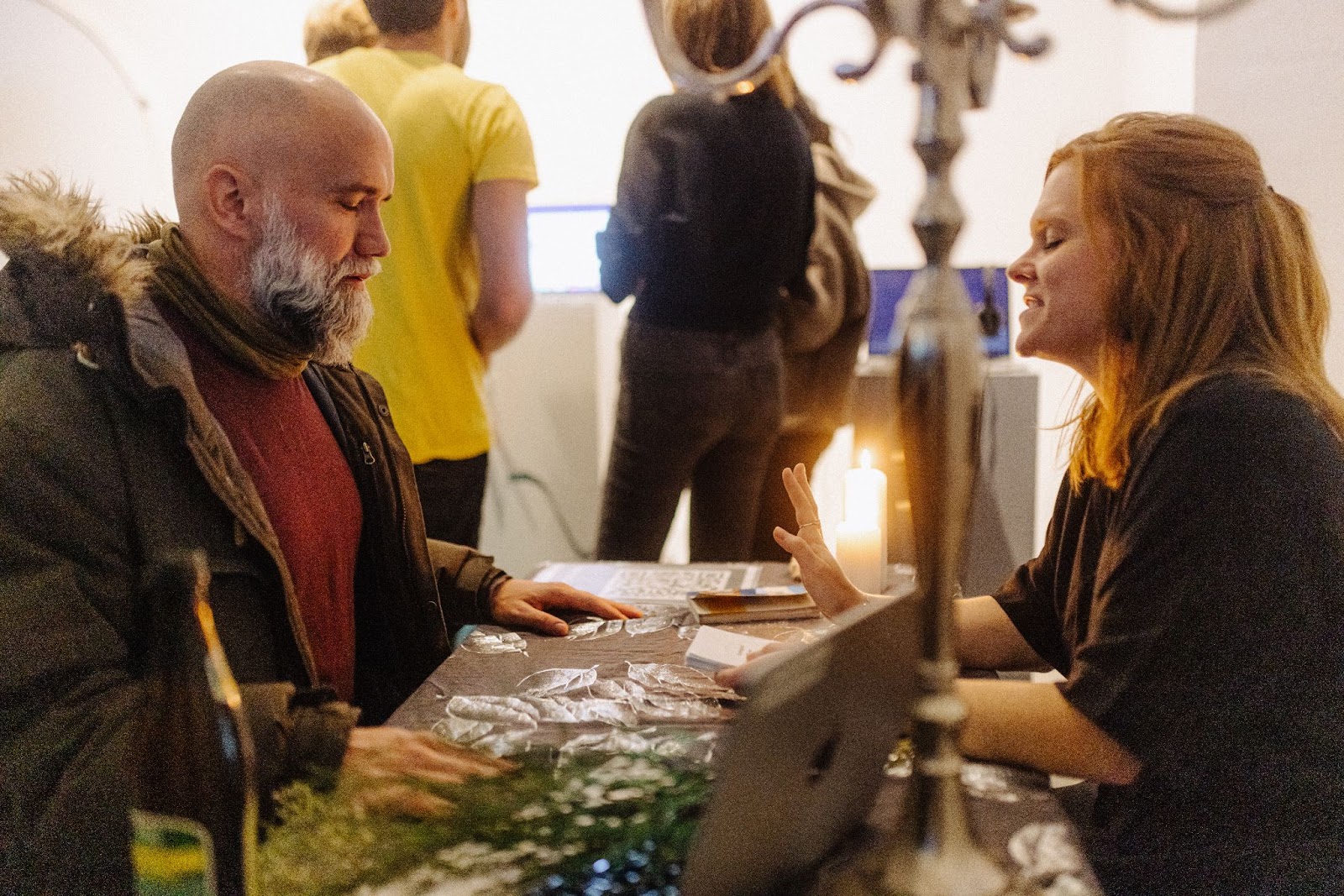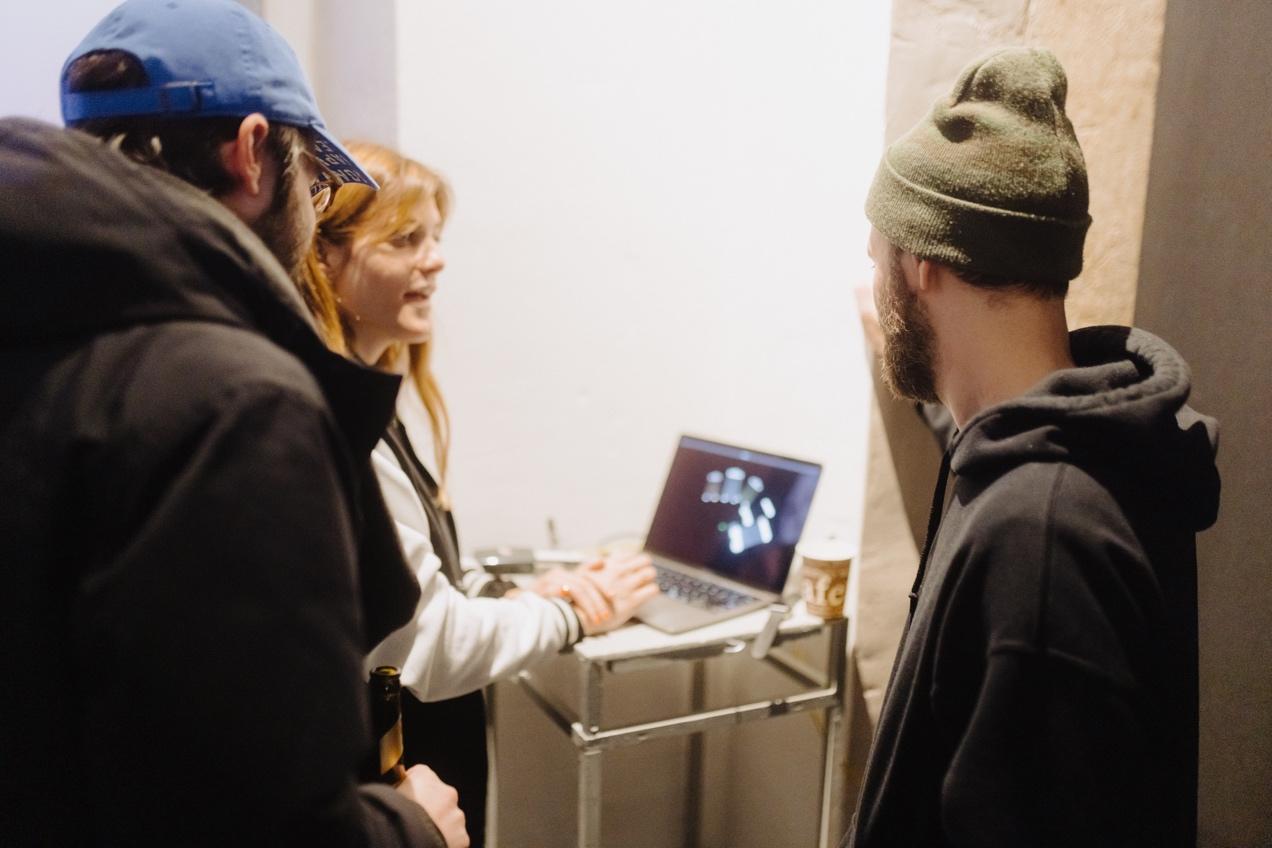Following the first post-pandemic winter term in Berlin, this year’s IMA Low Res cohort had a public in-person group show in Berlin, Germany on January 19, 2023.
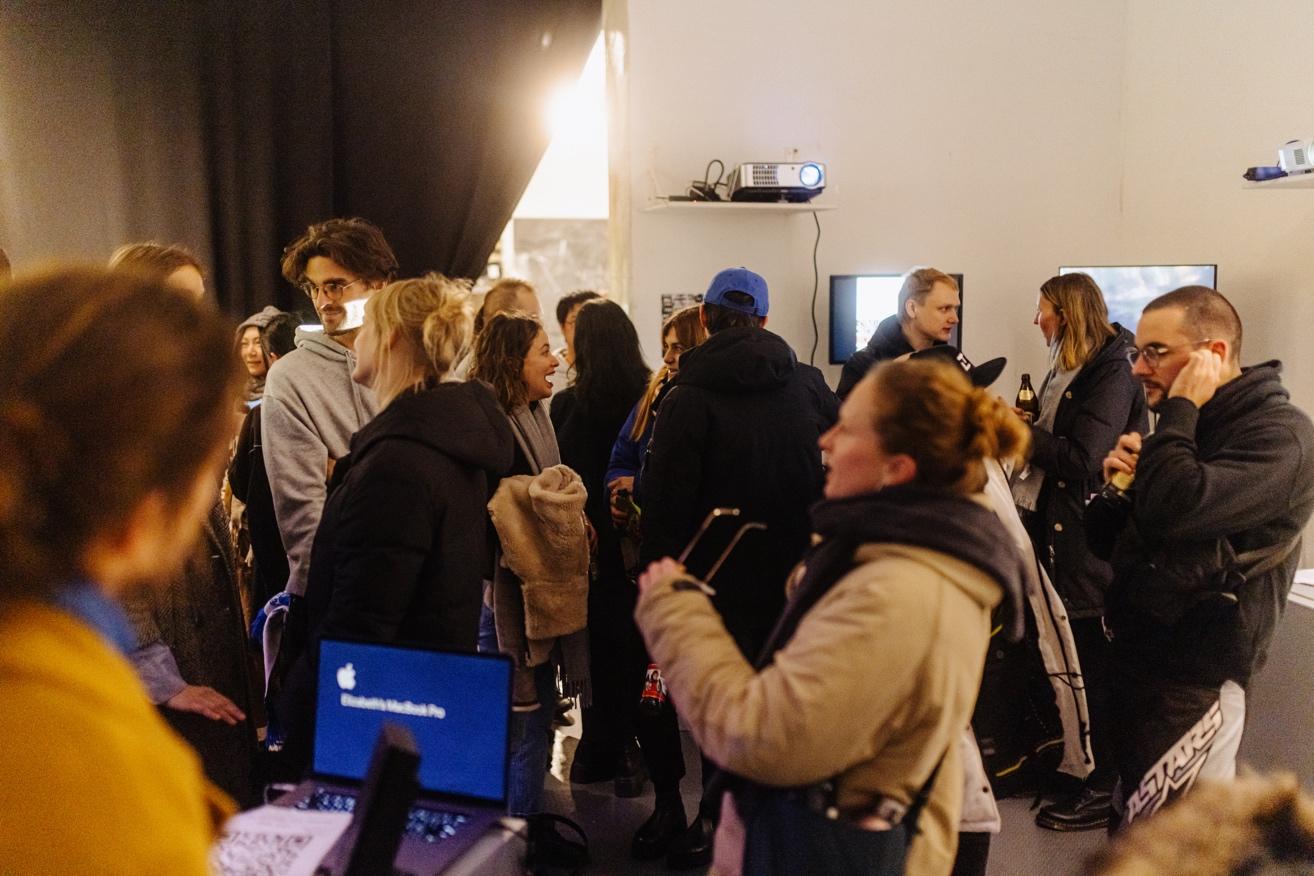 The Show Opening
The Show OpeningThe group show was put together by the students and instructors from all three IMA Low Res J-Term classes taught during the two-week intensive in Berlin: Civic Ecologies by Jamie Allen, Virtual Worlds by Pierre Depaz, and Radical Networks by Sarah Grant. Special thanks to Danja Vasiliev and Sarah Grant at Studio Weise7 for organizing and hosting the show. The opening night of the show drew a big crowd, including local artists and technologists, NYU alumni and the greater Berlin community.
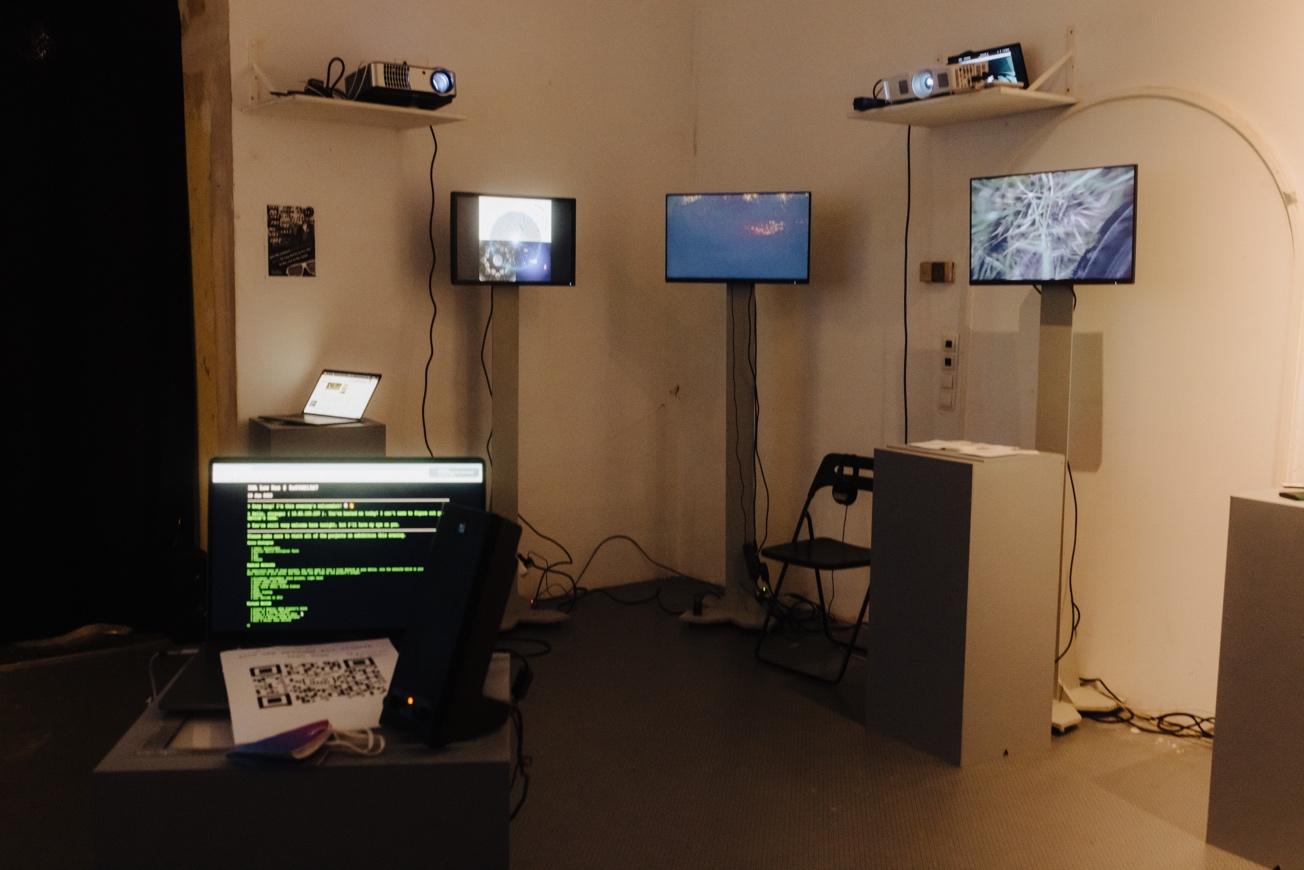 A Corner of the Exhibition Right Before the Opening
A Corner of the Exhibition Right Before the Opening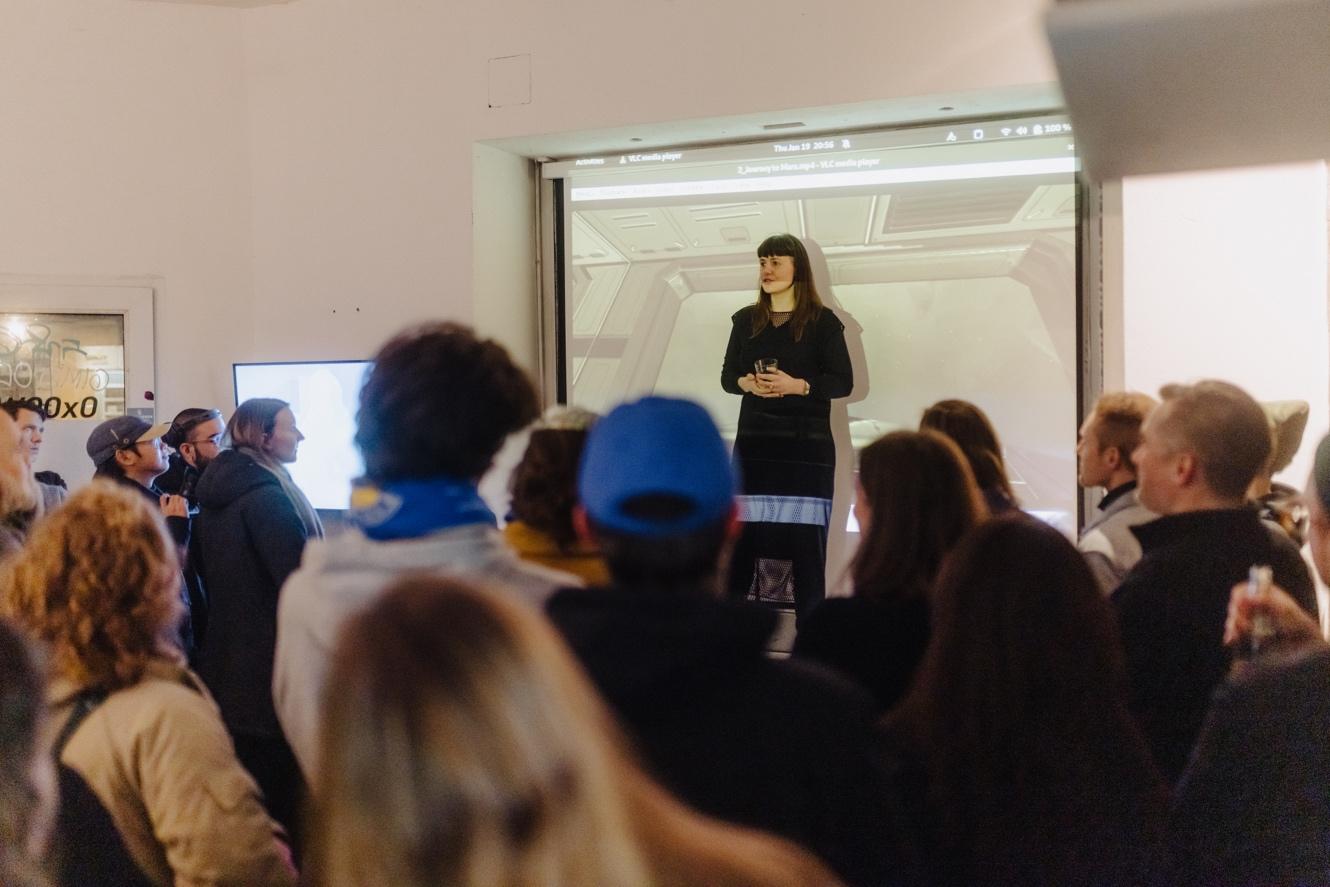 Instructor and Media Artist Sarah Grant Giving an Opening Speech for the Show
Instructor and Media Artist Sarah Grant Giving an Opening Speech for the ShowStudents from Jamie Allen’s Civic Ecologies class used a variety of art mediums to create daily rituals. The results were a diverse group of works including documentaries, short films, written instructions, tarot readings, mobile apps and more.

Jamie Mccoy’s “breadcrumbs” Project Considers the Ways in Which Walking Through a City Connects Inhabitants to One Another and to Their Surroundings Through a Series of Location Based Scores and a Video.
Nicole Padilla’s “berlin Ecological Tarot” Reading Station
(From Left to Right) 1. Ada Huang’s “street Culture for the Chinese Elderly,” a Film for the Future Self in Appreciation of Life’s Day-to-day Joys That Are Often Overlooked. 2. Jun Shu’s “the Cosmogram of Marketplace,” a Quad-split Video Illustrating the Relationship Between Economic Markets, the Labor Force, and Urban Development. 3. Yuqian Ma’s “the Harmony of Drips,” a Ritual Using Glass, a Stick, and Drips From a Faucet, That Involves Listening to the Sound of the Drips and Tapping Along to the Rhythm to Reflect on the Relationship Between Humanity and Nature.
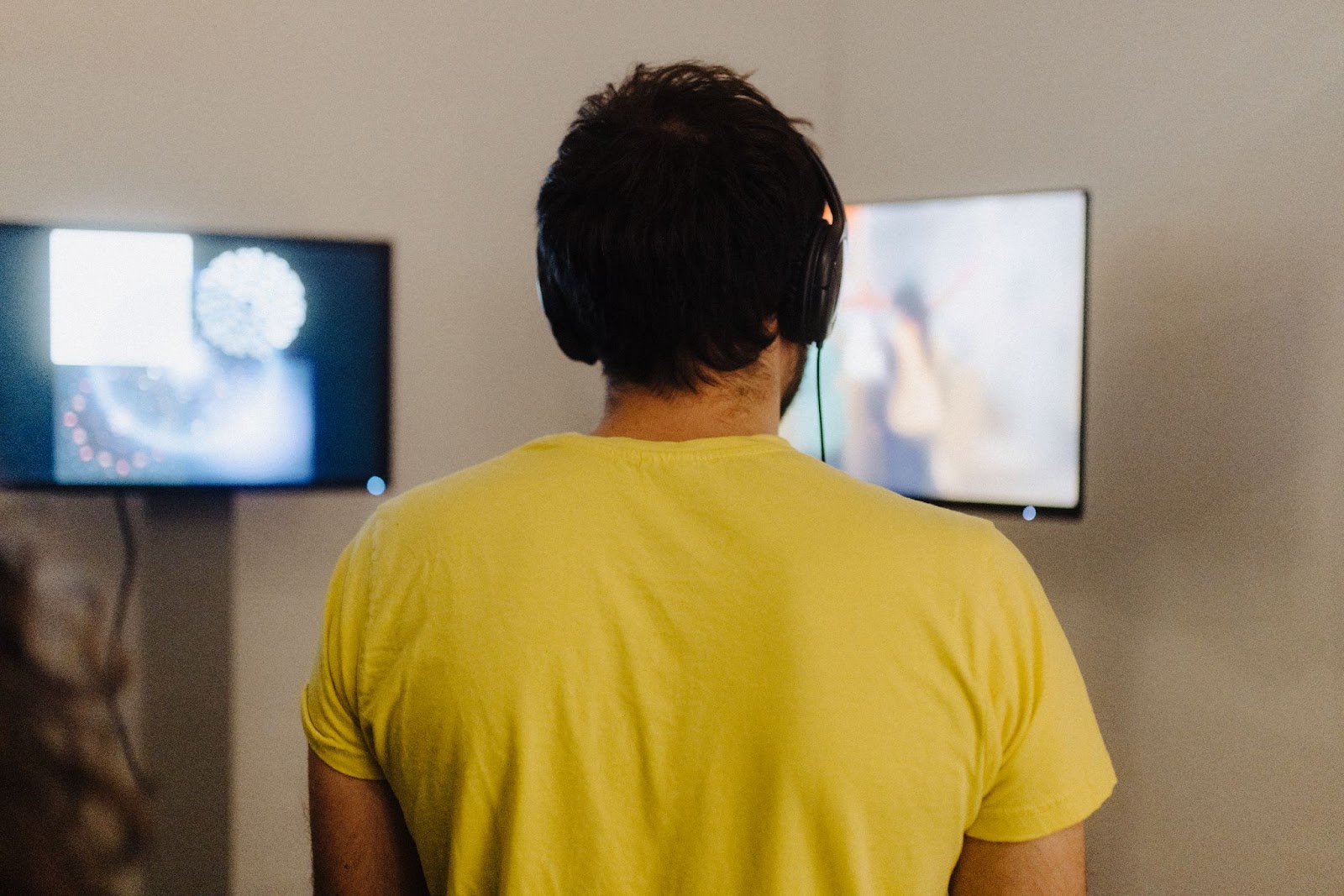 Visitor Watching Students’ Works
Visitor Watching Students’ WorksStudents from Pierre Depaz’s Virtual Worlds class worked in groups to create virtual worlds and games using the Unity game engine. Audience members were able to view the worlds’ students created on a large projector as well as directly immerse themselves into these constructed spaces.
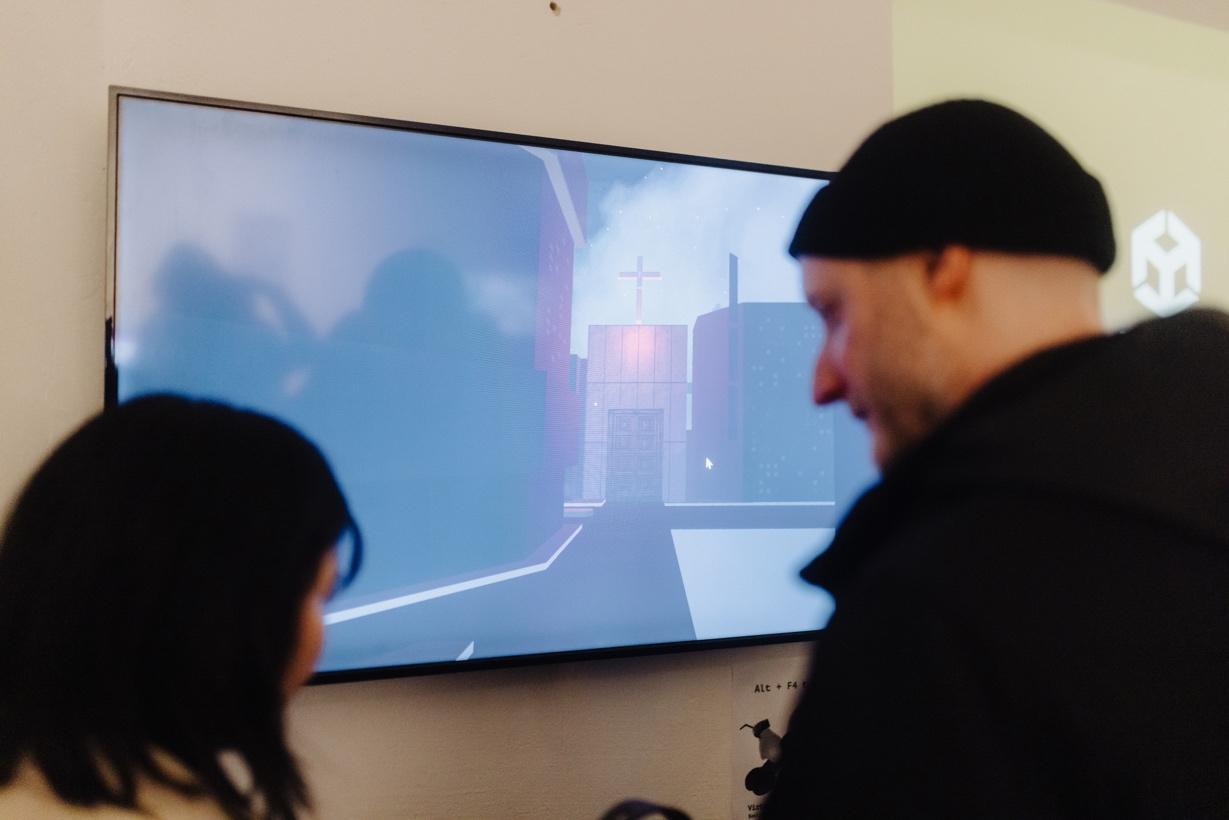 Yiyang Cao and Renton Lin’s “adam Diggler’s Grave” Unity Game
Yiyang Cao and Renton Lin’s “adam Diggler’s Grave” Unity Game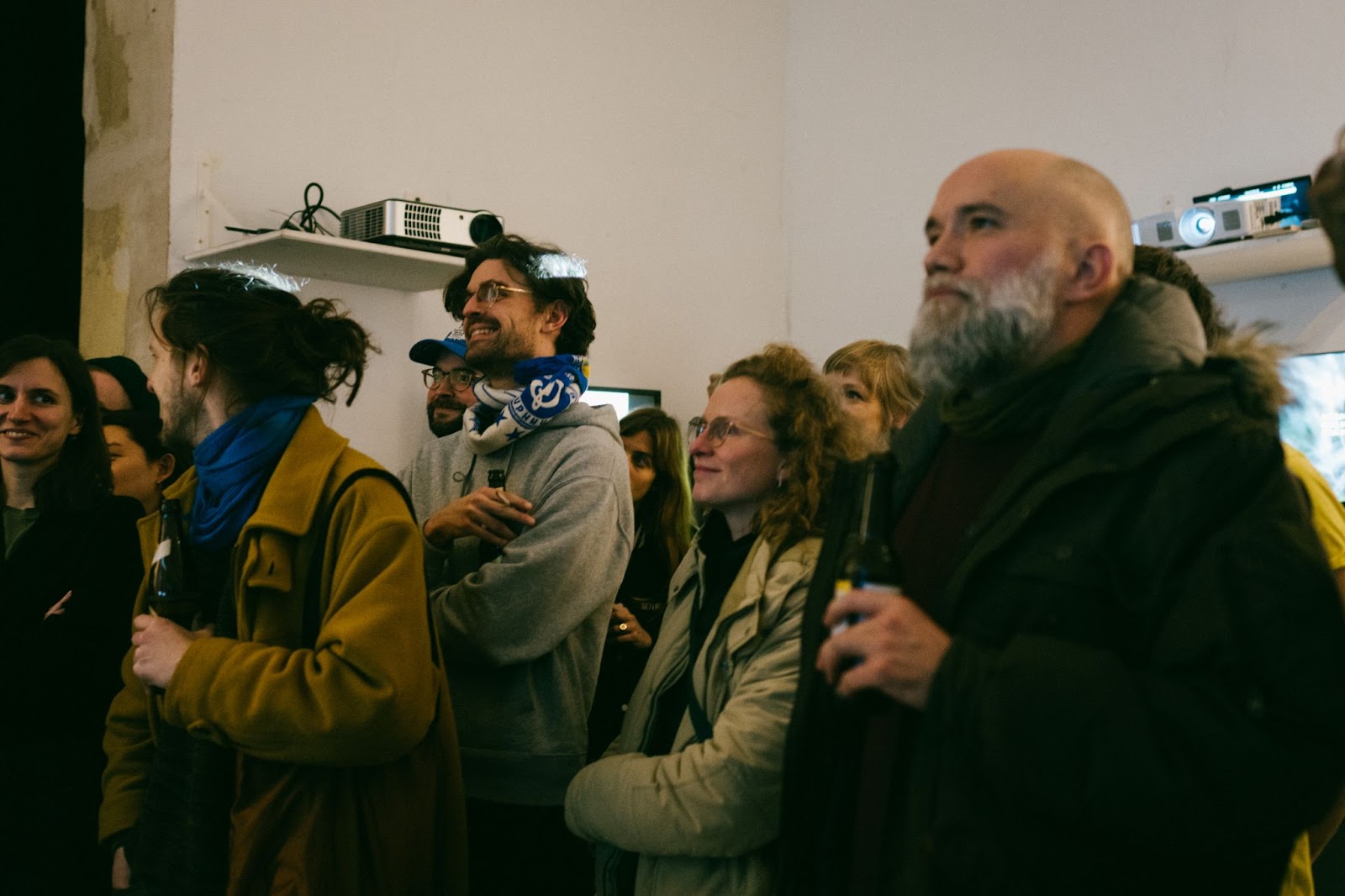 Show Visitors Viewing the Worlds’ Students Created on a Large Screen
Show Visitors Viewing the Worlds’ Students Created on a Large Screen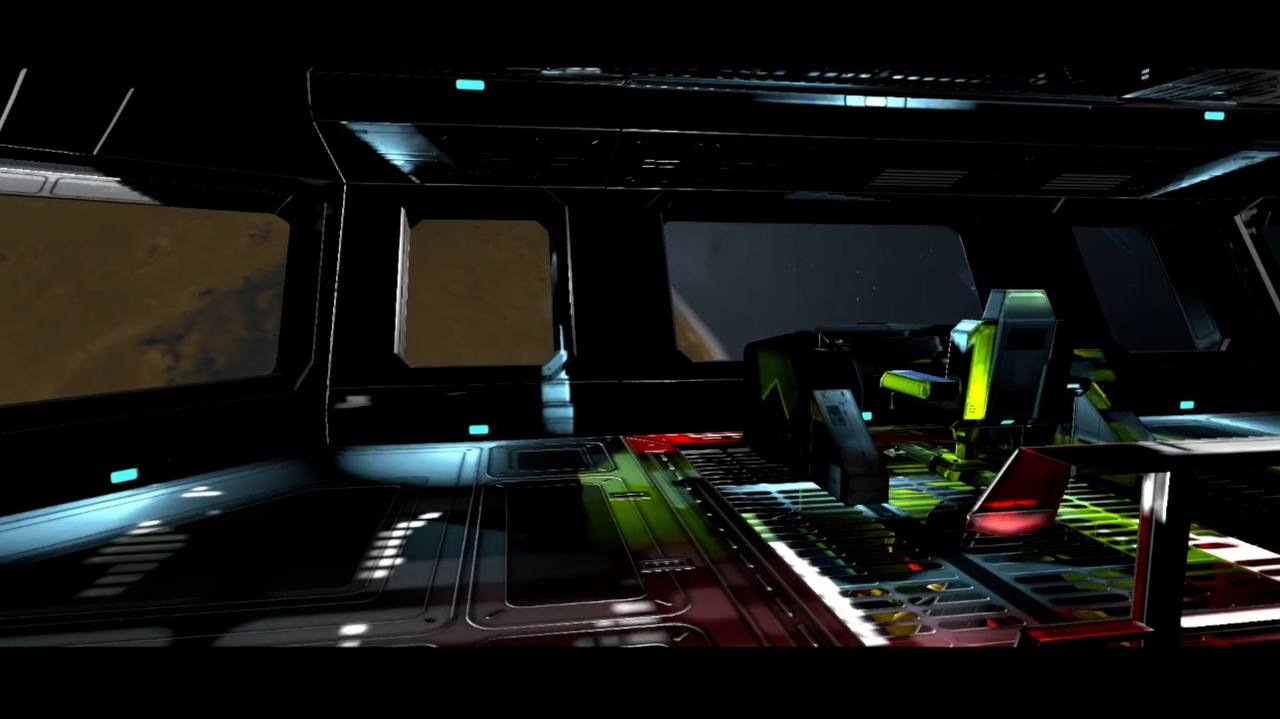
Yunshan Jiang and Siri Zhao’s “journey to Mars,” a World 500 Years From Now Where People Can Easily Transport Between the Uninhabitable Earth and Mars.
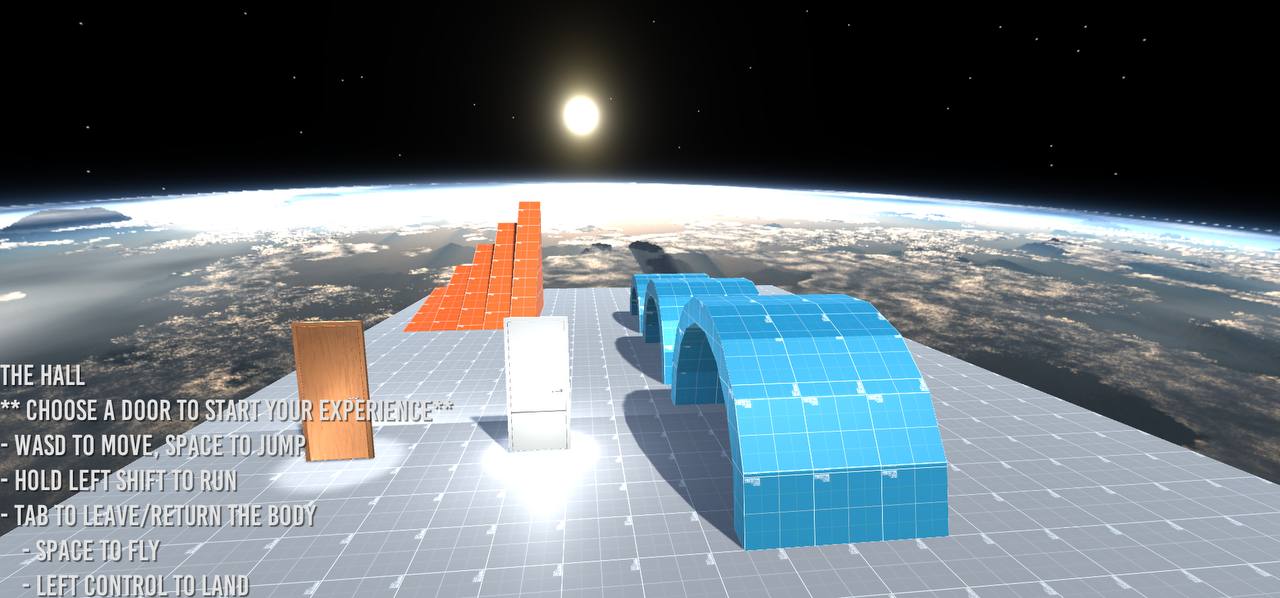
Yueqing Dai and Wentao Wang’s “dream Designer,” a Museum Where Visitors Can Interact With Different Exhibitions While in a Dream.
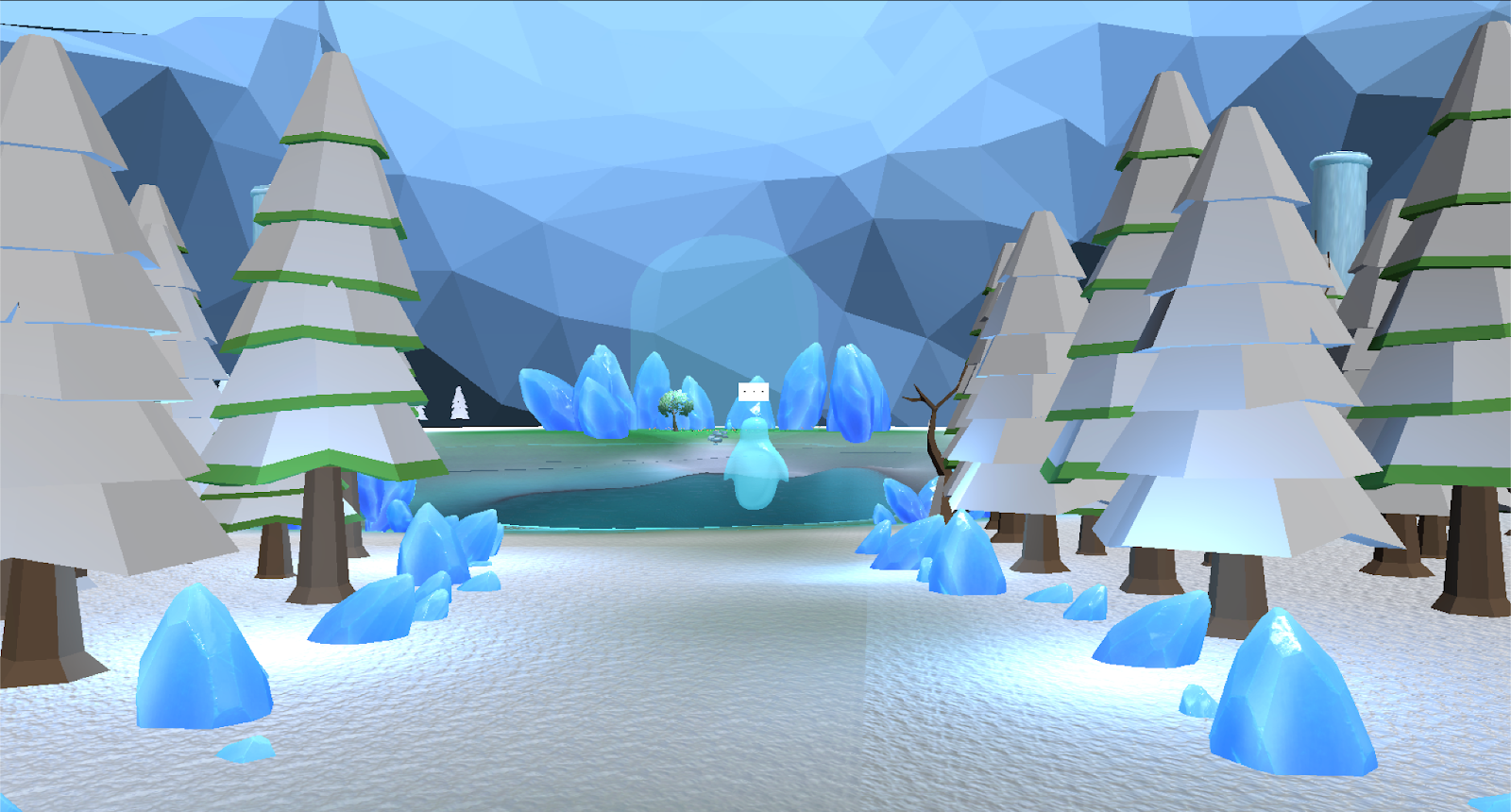
Dora Do, Ai Xia, Zaida Aleman’s “verdant,” a Virtual Interactive Experience Where Players Find Themselves in a Distant Future and Discover the Mystery Behind Their Own Story.
Students from Sarah Grant’s Radical Networks class used Raspberry Pis to create all types of interactive works related to networking technologies. Works ranged from public Wi-Fi networks where users could only access a 2012 version of the web, filtered and manipulated unencrypted government sites, and playful explorations with the physicality of signals emitted by connected devices.
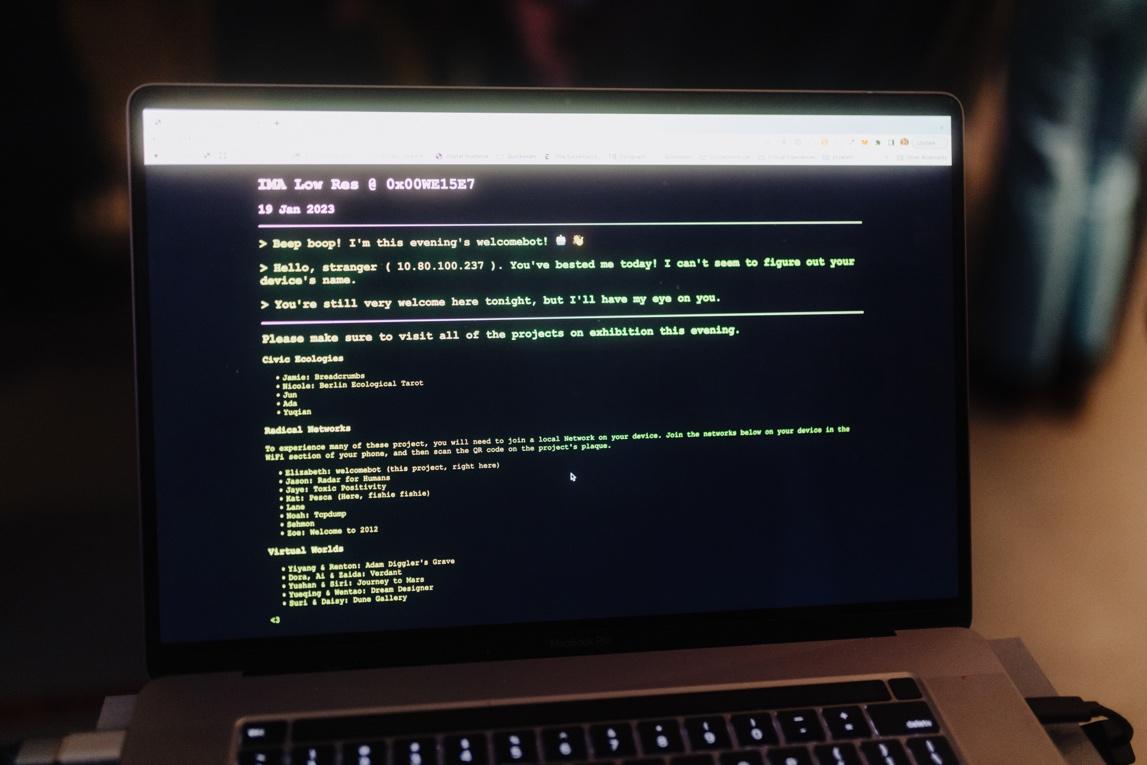
Elizabeth Engelman’s “welcomebot” Project Welcomed Visitors as They Entered the Show Space
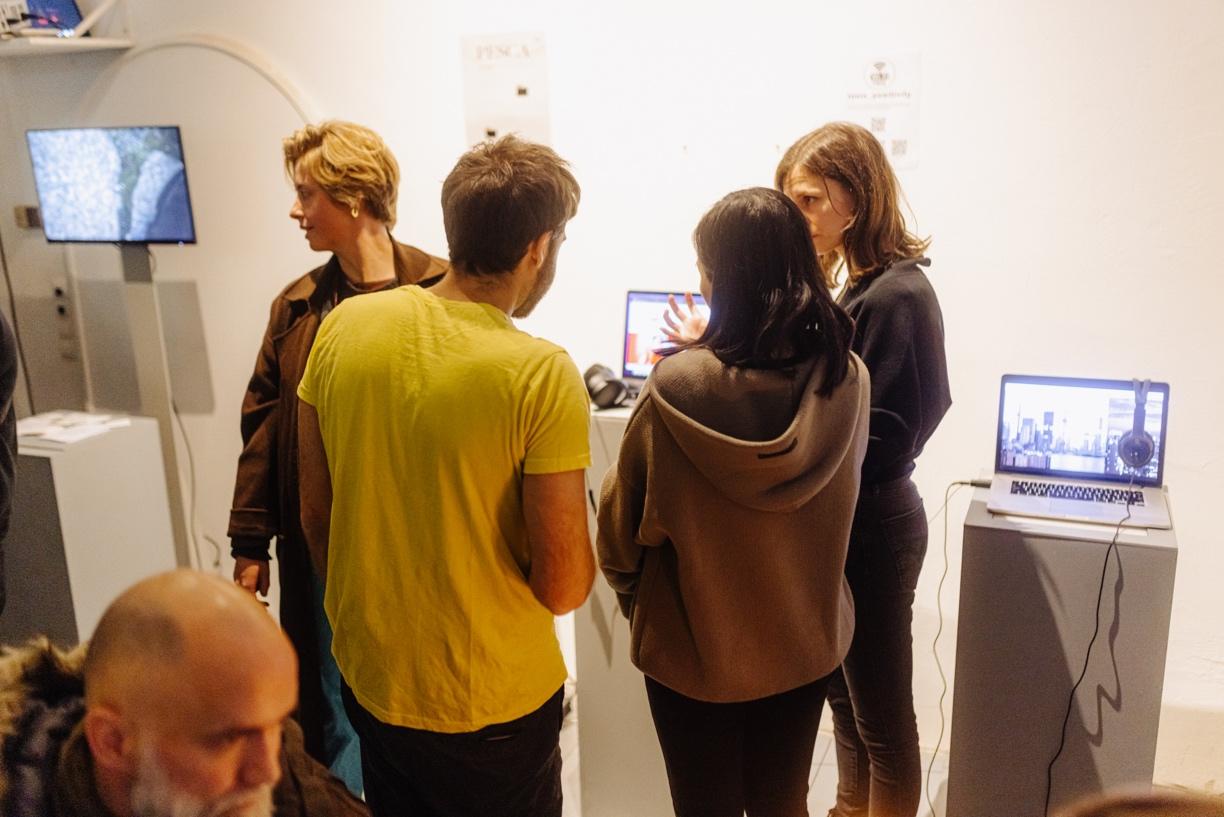
Jaye Cho (2nd Person From the Right) Explaining How Her Wi-fi Project Switches Out Words on Unencrypted Websites to Create Fake News Without Users Noticing

Visitors Playing With Kat Park’s “pesca” Project, a Portable Mesh Network in Which an Led Light Signals When Another Node Has Wandered Too Far. Made Up of Several Raspberry Pis, Battery, Packs, Wifi Antenna, and Leds Programmed With Python.
Visitors Watching the Documentation of Jason Snell’s Interactive Project Where He Uses a Raspberry Pi Wi-fi Antenna to Send Wi-fi Signal Strength to Multiple Phones and Control the “pulse Speed” Interaction on Those Phones as They Move Closer to the Antenna.
IMA Low Res students who have participated in the group show:
Zaida Aleman
Yiyang Cao
Jaye TC Cho
Yueqing Dai
Noah Dixon
Dora Do
Elizabeth Engelman
Ada Huang
Yunshan Jiang
Renton Ling
Yuqian Ma
Jamie McCoy
Nicole Padilla
Kat Park
Zoe Robert
Jun Shu
Jason Snell
Wentao Wang
Ai Xia
Siri Zhao
Special Thanks for Additional Support:
Danja Vasiliev
Brian Ho
Danni Wang
Ruta Kruliauskaite
Photo Credits:
Brian Ho
Renton Ling
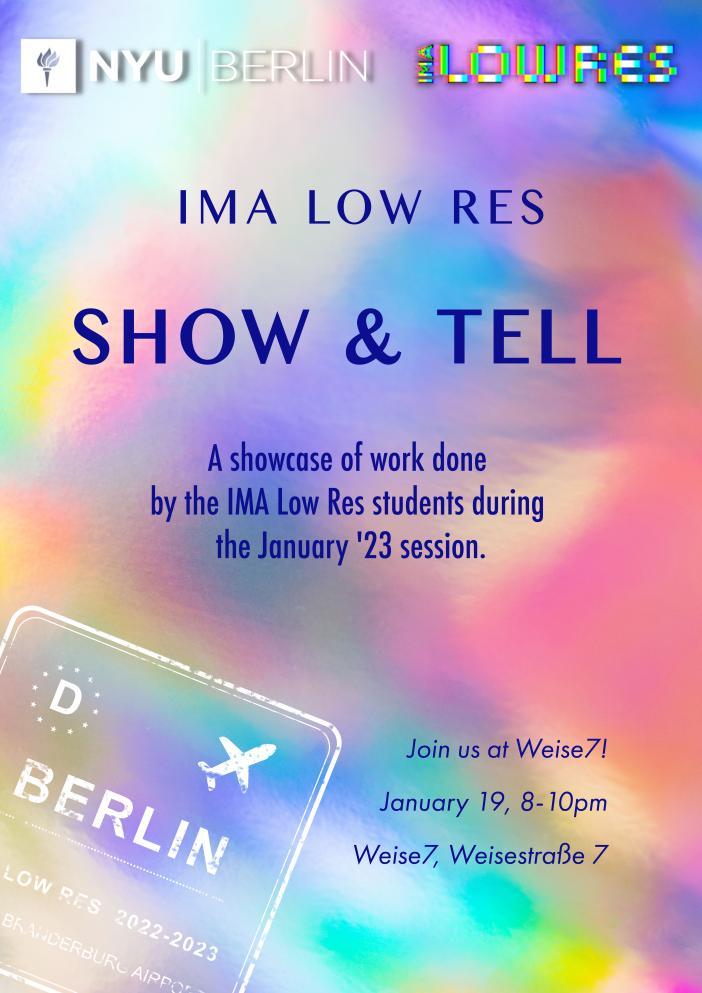
Ima Low Res Show & Tell Poster
IMA Low Res is a unique one-year graduate school experience in creative and purposeful application of technology that offers three site-specific sessions across New York University’s Global Network in New York, Berlin and Shanghai, interspersed by two semesters of online learning.
For a larger representation of the types of work that happen at IMA Low Res, see the IMA Low Res 2022 thesis project archive.


